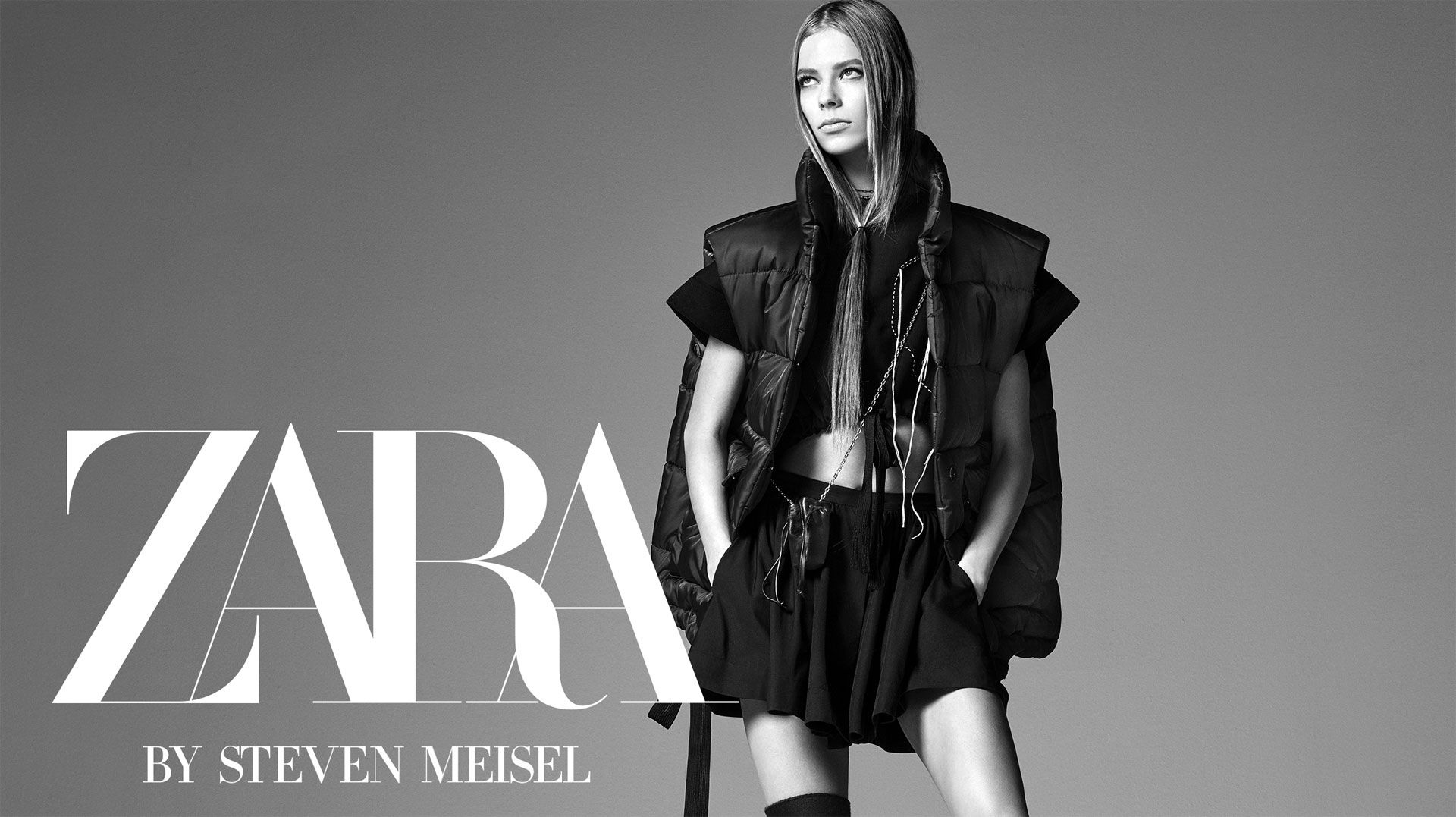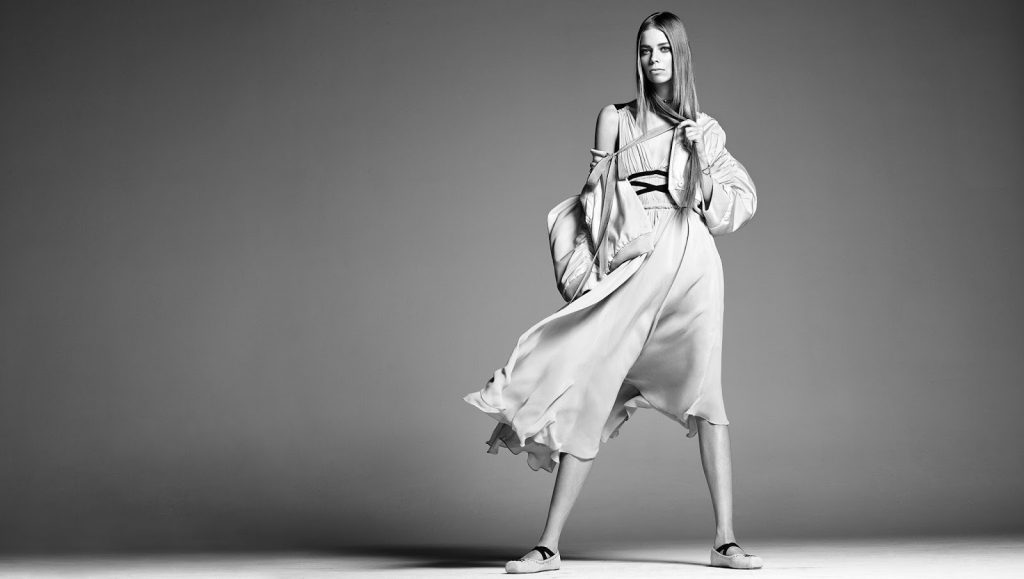Consumption patterns have changed significantly over the past several decades. Implicit in this is the increasing acceptance of and growing reliance on cheap, disposable fashion, which has given rise to the making of internationally-reaching multi-billion-dollar fast fashion brands, those known for translating runway looks into low-priced garments and accessories intended for mass-market consumption. Not always a popular choice for fashion-oriented individuals (and often viewed as a guilty pleasure of sorts), fast fashion has undergone something of an interesting development in recent years. The once prominent stigma of “mainstream” fashion collections – which basically destroyed designer Roy Halston Frowick in the 1980′s when he teamed up with J.C. Penney for a diffusion-type collection – is gone. And despite the well-known and well-documented abuses associated with fast fashion, consumers have taken to shopping cheap runway knockoffs en masse.
The Rise of Fast Fashion
Fast fashion brands have certainly had a hand in the large-scale shift towards and widespread glorification of cheap garments and accessories, but external factors – such as the economic climate, the glorification of cheap fashion by the fashion press, and a decreasing sense of brand loyalty among consumers – have played a significant role, as well.
Consider the marriage between high fashion brands and fast fashion retailers. Since 2004, when Swedish fast fashion giant H&M first enlisted Chanel creative director Karl Lagerfeld to create a capsule collection, high fashion designers have been continually teaming up with fast fashion retailers to bring their signature aesthetic to the masses, thereby glamorizing and normalizing cheap (and cheaply-made) clothing.
There have been additional messages from the upper echelon of the fashion establishment that signal that fast fashion – and the mixing of high fashion with fast fashion – is no longer a faux pas. Vogue magazine’s longstanding editor in chief, Anna Wintour, for instance, has been credited with “mixing low-end fashion items with more expensive pieces in her photo shoots.” Her November 1988 debut cover, for instance, her first for the American fashion magazine, featured a model in a pair of $50 jeans and a $10,000 embellished shirt.
Similarly, the fashion press has oftentimes taken to promoting “the look for less” or spot-on copies of some of the runway’s priciest brands. This gives rise to another level of acceptance of the practice of fast fashion, and also inherently supports and/or serves to excuse the design piracy associated with fast fashion, a sentiment that has permeated younger generations of consumers.
Couple the foregoing with the impact of the Great Recession – as the December 2007-June 2009 economic downturn is known – which made cheap fast fashion (and high-fashion copies) even more attractive, oftentimes out of necessity for consumers wanting trendy garments that could be treated as one-off seasonal items.
Still yet, and potentially in connection with the aforementioned phenomena, consumers have become decreasingly loyal to their favorite high fashion brands. Women that once wore head-to-toe designer looks – including fashion industry insiders – have branched out with more individualized, diversified wardrobes. The result comes in the form of style that seamlessly combines both high fashion garments and accessories with less investment-worthy (read: fast fashion) articles.
As for younger consumers, they are less opposed to buying copies than older generations, especially when the products are purchased online, according to a recent study by the European Union Intellectual Property Office. The glorification of fast fashion by the media – as well as heavily-followed influencers – paired with the ever-rising price of high fashion and even some mainstream fashion (J. Crew, for instance, has been consistently shunned by consumers in recent years for being “too expensive”) has made cheap, trendy garments and accessories particularly popular among younger, more price conscious consumers.
In short: Consumers do not view brands, such as Zara, as merely guilty pleasures (i.e. as only a place to buy cheap, on-trend runway copies, for example) anymore, but instead, as bona fide fashion destinations.
Zara: High fashion? Fast fashion? Or something in between?
With this in mind, it has been difficult not to notice that a small handful of fast fashion retailers are rising to the occasion, so to speak, increasingly embodying the aesthetics of more high fashion brands. If consumers are willing to treat these retailers as legitimate sources of Fashion, why shouldn’t the fashion world embrace that? The Zaras of the world are certainly hoping more and more people do.
Zara – which boasts more sophisticated designs and quality of goods, as well as a more successful supply chain than its closest rivals, H&M, Forever 21, Topshop and Nasty Gal, for instance – sticks out as the brand that is most prominently pioneering the move towards emulating the brands it copies. The Spanish fast fashion giant, one of the few brands that posts near-consistent growth during each fiscal quarter, has undergone something of a more high fashion-focused makeover in recent years. Its ad campaigns, in particular, have taken a noticeable turn.
Zara’s ad campaigns – or as it labels them, “editorials” – look more like something that could appear alongside a luxury brand’s ads than those of a fast fashion retailer than the cheap, mass-market images put forth by the likes of Forever 21 and other similarly situated retailers.
There are a few key visual cues and other, more administrative changes that come hand-in-hand with Zara’s editorial transformation. Take, for instance, the models. For its “S/S 2017 Collection 01” campaign, Zara cast Lexi Boling, Kiki Willems, Vittoria Ceretti, and Luisana Gonzalez, among other high fashion runway stunners to serve as faces for the collection.
In addition to walking in most of the major shows this season, these girls are currently starring in an array of S/S 2017 season campaigns for high fashion brands. Boling, for instance, fronts campaigns for Versace, Alexander Wang, Sacai and Prada. Willems stars in Raf Simon’s campaign for Calvin Klein, as well as in S/S17 campaigns for Prada, Hugo Boss, and Sonia Rykiel. Luisana Gonzalez’s S/S17 campaigns consist of Vera Wang and Marni. And do not forget Vittoria Ceretti, who appears in Bottega Veneta, Givenchy, Alberta Ferretti, Alexander McQueen, and Fendi campaigns this season.
Secondly: Consider the photographers responsible for such campaigns. Far from enlisting the help of little known talents, Zara recently tapped Steven Meisel, one of the most iconic fashion photographers of all time, to shoot its S/S campaign. This season, Meisel also shot Max Mara, Coach, Moschino, Alberta Ferretti, and Prada campaigns, among others.
There is also the creative director of the campaign to consider: Fabien Baron, who was behind the S/S17 Ralph Lauren, Furla, Nars, and La Perla campaigns. And the brand’s stylist: Karl Templer, whose current clients also consist of Alexander Wang, Sacai, Valentino, Ralph Lauren, Coach, Dior, and Tommy Hilfiger.

For another recent “editorial,” the S/S 2017 menswear one (as well as its F/W 2016 campaign), Zara tapped photographer and longtime Raf Simons collaborator Willy Vanderperre (he also shot campaigns for Prada, Dior Homme, Calvin Klein, Raf Simons, and Jil Sander very recently) and stylist Alastair McKimm, who has been doing a lot of work for YSL since Anthony Vaccarello was appointed creative director.
Other recent high fashion figures enlisted by Zara have included photographers Cass Bird, Craig McDean, Mario Sorrenti, and Jamie Hawkesworth, as well as stylists Marie-Amélie Sauvé and Francesca Burns, among others. These are far from small-time talents in the fashion industry.
In short: Zara is increasingly tapping some of the industry’s most well-known and heavily relied upon talents to bring their celebrated and oftentimes distinctive aesthetics to the table in order to offer its highly favored knockoffs – recent offerings include an array of designs that look a lot like those from Balenciaga, Celine, Louis Vuitton, Gucci, Loewe, J.W. Anderson, Proenza Schouler, etc. – to consumers (whether they be college girls or fashion editors looking for a quick Celine-like steal) in an even more enticing way.
Should High Fashion Be Worried?
Given’s Zara’s mission to take over the world of retail by what The Atlantic’s Derek Thompson calls “bringing elite fashion to the masses,” its increasingly high fashion leanings do not bode well for everyone else. While the longstanding notion is that fast fashion retailers do not stand to impact the sales of such differently situated high fashion brands, Zara’s success to date paired with consumers’ willingness to break the rules in terms of their buying habits, Zara (as distinct from other fast fashion retailers like Forever 21 and H&M) might be establishing itself as a very real competitor to more luxurious brands – albeit an unconventional one.
As noted by Business Insider in 2012, arguably before Zara even really started to make its mark in terms of high fashion, the company was “making luxury retailers pretty nervous. Zara tries to build their stores as close as possible to the luxury boutiques like Stella McCartney and Chanel. Meanwhile, those retailers are trying to stay far away from the fast-fashion company.”
Another important way that Zara has impacted fashion – aside from what the New York Times’ Suzy Hansen calls completely breaking up the “century-old biannual cycle of fashion” – “is by negating the idea that expensive clothes are more desirable.” Hansen continues on to note that current culture views “getting something chic for a steal [as] something to brag about.” Isabel Cavill, a senior analyst with Planet Retail, a consulting firm based in London, echoed this notion, saying, “There’s a bit of cachet in picking up something that looks like £500 for £50.”
That is one of the most damning aspects of the large-scale embrace of fast fashion for high fashion brands. They simply cannot compete with the price of Zara’s goods.
And as always with Zara, the discussion of its supply chain proves essential. Its business model depends on a rapid runway-to-retail timeline (thanks to centralized manufacturing), quick turnover (largely due to the fact that it produces only small quantities of garments and accessories), and a sophisticated forecasting system (which enables the brand to make only the most desirable items for their shoppers before these shoppers even know they want these things).
This is, of course, yet another way that the retail giant is outperforming its high fashion counterparts. As Masoud Golsorkhi, the editor of Tank magazine, said a few years ago, “When you went to Gucci or Chanel in October, you knew the chances were good that clothes would still be there in February. With Zara, you know that if you don’t buy it, right then and there, within 11 days the entire stock will change. You buy it now or never.”
With all of these pros in place, Zara was likely slated to continue to dominate the industry for years to come, particularly as high fashion brands attempt – and fail – to implement any meaningful take on See Now-Buy Now, something Zara has managed to offer from the outset. Its move to adopt the aesthetics of the brands it knocks off – by co-opting their models, photographers, stylists, etc. – appears to be yet another strategic move, suggesting that Zara is not content to merely serve its own segment of the market, but is coming for consumers across the board in a bold way. So, watch out high fashion, Zara is coming for you with guns blazing.











